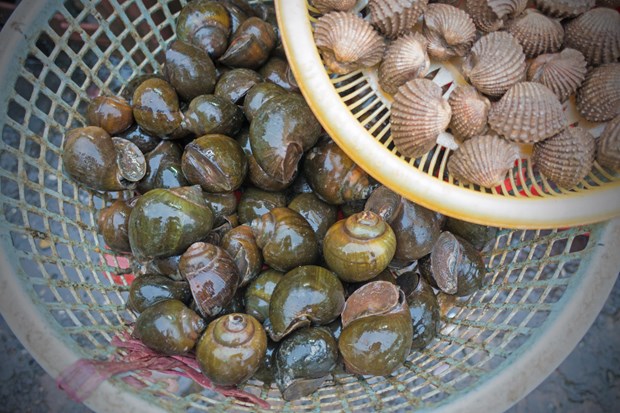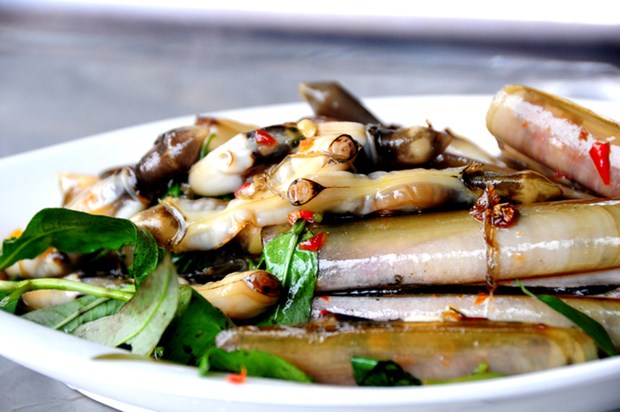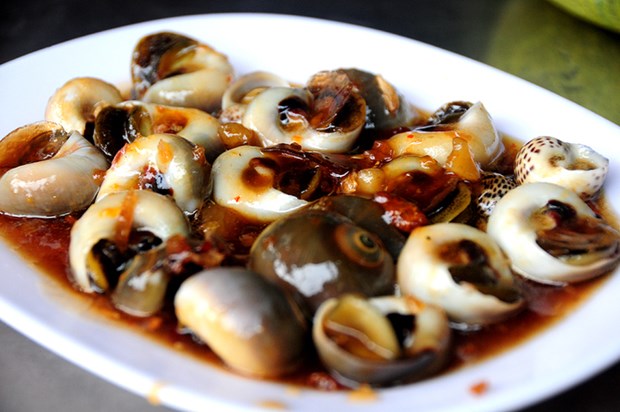From Michelin-starred fine dining, to chili-laden, beer-swilling, street-food staple, the humble snail takes many forms.
Oysters,
lobsters, sushi and snails; all now “posh” and expensive elements of global
food culture. They were, however, once all considered to be the food of the
lower-classes.
In
fact, oysters were so plentiful during the European colonization of the
Americas that their crushed shells were a common component in brick making.
Likewise, the practice of wrapping raw fish (and other meats) in rice was, many
centuries ago, a common way for Japanese farmers and fishermen to preserve food
for several months at a time.
And
then there’s lobster, that ubiquitous element of modern fine dining. According
to a report on the creature's recent popularity by the U.K.’s Telegraph newspaper, the clawed
crustacean was “once not deemed worthy for anything other than the ‘lowest of
the low.'”
It’s
funny how things change. Add a bit of gold leaf, a smear of pureed veg, a froth
of salty foam, and a jacked-up price tag, and suddenly the cuisine of the
working classes jumps a few steps up the social ladder.
Snails,
on the other hand, still somehow seem to hover between both worlds.
High
in protein, low in fat, and easy to forage for (or farm), they’ve been gobbled
by men and women from all walks of life for thousands of years, and on almost
every continent on earth.
In
France today, of course, and in much of Europe, they’re considered a delicacy.
Take L’Escargot Montorgueil, for example, one of Paris’s oldest and most famous
snail restaurants. Here, diners will happily pay up to 45 euros (approximately
VND1.15 million) for a plate of 12 carefully prepared escargots.
But
in Vietnam, snails are still very much a part of the everyday diet.
“The
Vietnamese love snails!” says Loan Tran, Saigon-based foodie and founder of
food and sightseeing tour company Tiger Tours. “We usually eat them at
lunchtime or dinner, over beers and and with our friends.”
“Snails
can be a part of a seafood feast, a drinking feast, or a snack,” adds Helen
Huyen, recipe book author, YouTuber and blogger at danangcuisine.com. “We only
eat snails that live in water, like ponds, rivers, or the sea. No garden
snails!”
How snails are
collected in the Mekong Delta
As
with bread, beef, carrots and coffee, it would be easy to assume that the
practice of eating snails came to Vietnam with the French in the 1800s, but the
Vietnamese have been doing it for thousands of years.
According
to "Rice and Baguette: A History of Food in Vietnam", by Vu Hong
Lien, mounds of discarded mollusk shells discovered in Nghe An Province,
northern Vietnam, each measuring several meters high, are thought to date back
over 10,000 years.
Found
all over Vietnam, and with each region boasting its own speciality dishes, from
warming winter snail porridges in Hanoi, to roadside beer and barbecue joints
in Saigon, the country is a haven for snail lovers.
While
the French pick their escargot from just a handful of land-based varieties, the
Vietnamese translation of "oc” actually refers to a vast array of shelled
creatures, from smaller river and rice paddy snails, to giant saltwater conches.

Fresh snails in a market. Photo by Simon Stanley
“In
Vietnam, we have many different types of snail and we cook them in many ways,”
says Peter Cuong Franklin, head chef, founder, and CEO of Anan Saigon, a young
and dynamic restaurant and bar in downtown Saigon. “In France, you only get one
type — the land snail — and they’re only ever cooked with garlic, butter and
herbs.”
Along
with an inventive menu of creative, Vietnamese-inspired dishes, it’s his
Vietnamese snail pizza (based on a banh trang nuong, often known as a
"Vietnamese street pizza") that perfectly blends the old and new
worlds where snails are concerned.
“We’re
trying to get people to enjoy local ingredients in a new and inventive way,” he
adds. “To connect the local market to the restaurant. And on a pizza, it makes
it much more accessible.”

Snail pizza. Photo by Simon Stanley
Franklin’s
pizza is a great place to start your snail adventure, especially for those who
are unfamiliar with (or squeamish about) eating snails.
With
an aromatic, almost earthy taste (not too dissimilar to mushrooms), a firm but
tender texture, plus the familiar flavors of garlic, cheese, oregano and fresh
Vietnamese leaves and herbs, it’s the perfect small step into a brave new
world.

Oc do and Oc ca na. Photos by Mr. True.
From
there, anyone looking for an old-school snail feast in Saigon should head to
the numerous “Quan Oc” restaurants of Nguyen Thuong Hien Street in District 3
(north of the junction with Vo Van Tan), or the famous seafood restaurants of
Vinh Khanh Street, District 4.
Not
knowing quite what you’re getting is all part of the fun. Get them grilled,
steamed or stir fried — with any combination of dry or wet toppings and
seasonings, including chili, salt, garlic, lemongrass, ginger, and fish sauce —
then revel in Vietnam’s answer to Spanish tapas.
These
chewy, salty, slightly addictive morsels of snail meat are best ordered as part
of a night-long procession of small plates, all washed down with a night-long
procession of icy beer.
Suck,
fork, scoop and slurp your way through the evening (and through the menu) while
leaving a tidy (or not-so-tidy) pile of empty shells and cans under your table.
Helen Huyen’s
top-four tastiest snail varieties:

Oc mong tay. Photos by Mr. True and Ma Lum

Oc huong

Oc mo

Oc dinh
For
those in Hanoi, bun oc (snail noodle soup) is a local comfort-food breakfast
staple. Bun Oc Co Them (6 Hang Chai, Hoan Kiem District) is a popular spot with
the locals, having been handed down through several generations of the same
family. It opens for just a few hours each morning, so arrive early to avoid
disappointment.
According
to Loan Tran, the snail experience is a must for anyone visiting Vietnam, and
she always encourages her foreign guests to try a plate or two. “Usually they
will say it's interesting and delicious,” she says, “but not all of them can
finish the dish. Some will stop after two or three, maybe because they're not
familiar with eating snails.”
As
for how to eat your snails, Loan has some good parting advice: “You should not
drink sugarcane juice or coconut juice [with them],” she says, “because it can
give you a stomach ache. It’s better to go with the locals and do what they
do.”
By Simon
Stanley/ VnExpress